In 2023, the winter solstice will occur at 03:27 UTC on Friday, December 22. This means people in the Northern Hemisphere on the East Coast welcome winter on Thursday, December 21, 2023, at 10:27 PM EST, while those on the West Coast celebrate winter at 7:27 PM PST. Have all your questions answered below! (First published December 21, 2014; this post is updated and republished to improve the content.)
Winter solstice, also known as midwinter, the hibernate solstice, and Yule, is the astronomical first day of winter and one of eight Pagan sabbat festivals in The Wheel of the Year. The winter solstice occurs at the exact moment worldwide–but is converted to local time. One of the most interesting facts about the solstice is that those in the Southern Hemisphere welcome the summer solstice when the Northern Hemisphere celebrates winter on December 21st or 22nd.
Are you confused yet? Not to worry! First, we answer your frequently asked questions (FAQs) about the winter solstice. Then, for those wondering how to honor the winter solstice, what they can do, or how to celebrate, we share a list of traditional winter solstice celebration ideas you can enjoy as a part of your winter solstice celebrations. You may also enjoy our Winter Bucket List. It’s filled with several winter activities for children and adults, including arts, crafts, and outdoor fun!

What is Solstice?
There are two solstices every calendar year: one in December and the other in June. The solstice happens simultaneously worldwide, but the season you welcome depends on which side of the equator you live on or the hemisphere in which you live.
The reason is a great science lesson for kids. It’s all about the sun’s tilt. Planet Earth sits at an angle of about 23.5 degrees. So, at different times of the year, the Northern or Southern Hemisphere is more tilted toward the sun and experiences the longer warm days and shorter nights characteristic of summer.
In other words, the solstice marks the moment in time that one of Earth’s poles is at its maximum tilt toward the sun while the other is at its maximum tilt away from the sun. The pole that shifts away from the sun will experience colder and shorter days and longer nights, characteristic of winter.
Related: Family Christmas Traditions for a Magical Holiday
What is Winter Solstice?
The solstice is when one of Earth’s poles is at its maximum tilt and the sun has reached its southernmost-decent. Thus, the sun travels its shortest path through the sky on the winter solstice. As a result, the hemisphere tilted away from the sun experiences the cooler winter temperatures, while the hemisphere tilted towards the sun experiences the warmer summer temperatures.
The summer solstice occurs when the sun reaches its northernmost position in the sky between June 20 and 21. The winter solstice is thus when the sun’s path is at its southernmost descent in the sky and usually happens between December 21 and 22. The diagram below illustrates Earth’s tilt at the summer and winter solstice in the Northern Hemisphere.
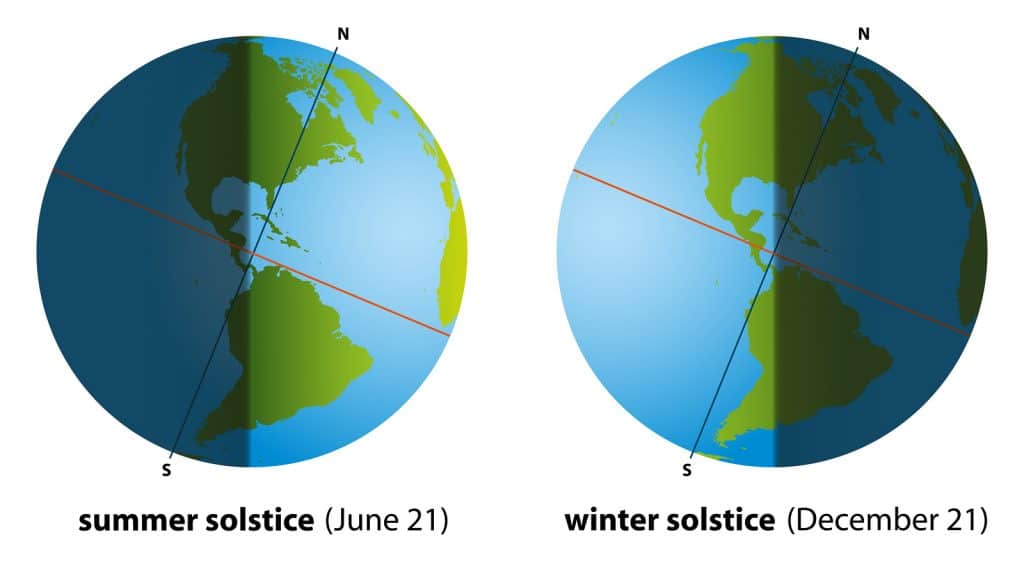
December Solstice
On the December Solstice, the South Pole tilts towards the sun, and the sun’s rays are directly overhead at the Tropic of Capricorn. Thus, those in the Northern Hemisphere welcome the winter, while those in the Southern Hemisphere welcome the summer. In June, these reverse.
In other words, the December Solstice marks the astronomical end of fall and the beginning of winter in the Northern Hemisphere and the astronomical end of spring and the beginning of summer in the Southern Hemisphere.
When is Winter Solstice?
The winter solstice typically falls between December 21 and 22 in the Northern Hemisphere and occurs in the Southern Hemisphere between June 21 and 22. However, the solstice can sometimes happen outside those date ranges. A Leap Day is added to the calendar to keep the equinox and solstice dates lined up with the seasons.
The day that the winter solstice occurs is the shortest day and the longest night of the calendar year. After the winter solstice, the days begin to get longer and the nights shorter until the year’s longest day and shortest night on the summer solstice.
The spring and fall equinoxes occur between the winter and summer solstices when day and night are equal. Learn more about the spring and fall equinox at the links below!
When is Winter Solstice 2023?
The winter solstice will occur on Friday, December 22, 2023, at 03:27 UTC (Coordinated Universal Time). This means the solstice happens on the West Coast at 7:27 PM PST on Thursday, December 21, 2023, in the Northern Hemisphere. At the same time, the solstice will occur on the East Coast at 10:27 PM EST on Thursday, December 21. (source)

Related: Winter Tree Art
Winter Solstice Yule Traditions
In ancient times, people grew afraid as the winter days dwindled to what seemed like almost nothing. They noticed that each day had less sunlight than the day before. As the days continued to get shorter and the nights longer when the season shifted from fall to winter, they feared there would eventually be no daylight left.
When the sun is at its southernmost point on the solstice, it seems almost as if it is about to disappear beyond the horizon forever. This was a time of dread for the ancient peoples as they saw the days getting shorter and shorter. So, they performed rituals to revert the course of the sun.
But once these ancient civilizations began measuring the hours of sunlight through the passing of the year, they realized that after the winter solstice, the seasons’ rhythm shifted once more, and the sun made its return. They noticed the sun slowly moving higher into the sky, showing it had been reborn.
Christmas marks the sun’s returning light, marked by the shining star rising over the evergreen treetops earlier than it did the day before. The light returning was, indeed, something to celebrate. However, each year held no promise that the seasons would change and the sun would return until the day that it did. Christmas is thus a celebration of light.
What is the mythology behind the winter solstice?
The mythology and traditions surrounding the winter solstice vary widely across different cultures around the world. These winter solstice traditions, while diverse, often share a common theme of light’s victory over darkness, rebirth, the triumph of good over evil, and the promise of the return of life and warmth after the darkest period of the year. Here are some examples:
- Yule in Norse and Germanic Traditions: The winter solstice is celebrated as Yule in many Norse, Scottish, Irish, British, and Germanic cultures. It’s a time of feasting, merriment, and the burning of the Yule log. The Norse believed that the sun was a wheel (houl) that changed its course, and Yule celebrated the sun’s turning point. It’s also associated with the god Odin and the Wild Hunt.
- Saturnalia in Ancient Rome: This ancient Roman festival honored Saturn, the god of agriculture and time. It was a time of feasting, gift-giving, and social reversal, where societal roles were temporarily overturned.
- Inti Raymi in Incan Tradition: In the Southern Hemisphere, where the winter solstice occurs in June, the Incas celebrated Inti Raymi, the festival of the sun. It was a time of animal sacrifices and offerings to the sun god Inti to ensure a bountiful harvest.
- Dongzhi in Chinese Culture: Dongzhi, the winter solstice festival in China, is a time for family gatherings and eating special foods like dumplings. It is rooted in the philosophy of yin and yang, with the solstice marking the point where the balance shifts towards more light and positive energy.
- St. Lucia’s Day in Scandinavia: Celebrated in Scandinavian countries, this Christian feast day is marked by processions led by young girls dressed in white and wearing crowns of candles, symbolizing the light overcoming the darkness.
- Alban Arthan in Celtic Traditions: The Druids, the priestly class in ancient Celtic societies, celebrated the winter solstice as Alban Arthan, believed to be a time when the battle between the dark and light halves of the year is at its peak.
- Shab-e Yalda in Persian Culture: Yalda Night, or Shab-e Yalda, is an Iranian festival celebrated on the longest night of the year. Families gather to eat, read poetry, and ward off evil spirits, marking the triumph of Mithra, the sun god, over darkness.
What do Pagans celebrate on Winter Solstice?
On the winter solstice, the shortest day of the year, many Scottish and Irish Pagans celebrate Yule. Yule is one of the eight Pagan Sabbat Festivals within The Wheel of the Year. It is one of the world’s oldest winter celebrations. On Yule, Pagans celebrate midwinter, rebirth, and the return of the sun.
In other words, winter solstice traditions and yule celebrations celebrate the “birth of the sun.” Many contemporary holidays and Christmas traditions are believed to originate from these early pagan rituals and ancient earth-based winter solstice celebrations. As do many of the folktales.
Traditional Solstice Folktales
Many people tell children the tales of Santa and his flying reindeer in the wintertime. But why not share the stories that influenced these modern-day tales? The legend of Santa Claus and his reindeer originates in folktales from around the world. The two most notable are the legend of “Saint Nicolas” and the winter solstice “Deer Mother.”
Saint Nicholas was a bishop who helped the needy and gave gifts to young orphans. After his death, the legend of his gift-giving continued to grow into the legendary character we know as Santa Claus. The jolly fellow with a long white beard clad in red who lives at the North Pole and delivers Christmas presents to children across the globe. Learn about Saint Nicolas and more in our post about Christmas Traditions.
The Legend of the Deer Mother
Before the legend of Santa Claus began, people believed that the Deer Mother took flight on the longest, darkest night of the year (the winter solstice). She safely carries the sun’s life-giving light in her antlers and into the new year. And, wait for it, she draws the sleigh of the Sun Goddess behind her. (source)
The Deer Mother is associated with the gifts of fertility, regeneration, and the sun’s rebirth. Her antlers are often depicted as the Tree of Life carrying the sun, moon, and stars in ancient drawings and pictographs. After learning these ancient folktales, I understood why Rudolf had the brightest light in the sky!
Since early Neolithic times, the Deer Mother lights our way through the long nights of winter. She is still revered as the “Life-Giving Mother” by many earth-based northern cultures. Today, northern people still depend on her for survival because the milk she carries sustains them during the cold winter months.
So, let us not forget that the solstice is the time to remember the stories and legends of the Deer Mother. And the life-giving blessings she continues to bring us during the dark days of winter—fertility, health, wealth, good fortune, love, and light.
The Spiritual Meaning of Winter Solstice
The primary intention of most Yule traditions and winter solstice celebration ideas is to release the dark in favor of the light. Both literally and metaphorically. And to welcome back the sun (light) as each new day grows longer.
Because we are a reflection of the universe surrounding us, the winter solstice represents the soul’s seasonal “dark night.” In other words, what takes place outside of us must also occur within us. Winter is the season of life in which we must face our inner darkness and make way for the sun’s return on the Spring Vernal Equinox.
This is why it is essential to take the time to spiral within to acknowledge our shadow self and the wisdom it shares with us as we celebrate the light so we can help bring this light of awareness into the darkness. We must also find gratitude for our mistakes and allow them to lead us back onto the path of our soul’s journey so they can help us find the light within. From within, so without.
How to Celebrate Winter Solstice: 28 Winter Solstice Rituals and Celebration Ideas
Ever asked, “How should I celebrate the winter solstice? Here’s a list of modern ideas and traditional ways to celebrate the winter solstice. But please remember, these winter solstice traditions and celebration ideas are merely suggestions of things to do on the solstice. This is not a mandatory list of winter solstice rituals that one must do to celebrate. Nor is it filled with any solstice activities that one should do or accomplish.
We don’t do everything on this list of winter solstice celebration ideas, and you shouldn’t have to either. Instead, use the ideas below to create a winter solstice ritual or celebration for you, your family, or your community, any way you like. Happy Solstice! You also might enjoy Summer Solstice Celebration Ideas.
1. Decorate a winter solstice Yule tree.
Decorate an indoor or outdoor Yule tree to celebrate the solstice for Yuletide (or Christmastide). In ancient times, solstice trees were decorated with candles, known as yule tree lights, and adorned with ornaments that symbolized the sun, moon, and stars. Sound familiar?
The Christmas tree is just one of the many traditions borrowed from early Pagan earth-based solstice rituals. In the past, live evergreen trees called Yule Trees were brought into the home and decorated because they are considered eternal symbols of life.
Today, there are two modern-day versions of a Yule tree: an outdoor winter solstice tree or the decorated indoor evergreen counterparts that most people call Christmas trees. My daughter and I love to decorate an outdoor winter solstice tree to feed the animals when their food supplies become scarce. Follow the instructions below to make an outdoor solstice tree.
How to Make an Outdoor Solstice Tree
Decorating an outdoor winter solstice tree is a fun winter activity for kids from toddlers to teens. Even adults love making homemade ornaments for the birds and animals around their homes at Christmastime. Homemade bird feeders and garlands made of popcorn make excellent solstice tree decorations! Ready to decorate a living tree with food for the animals? Learn how to decorate an outdoor edible Yule tree for the animals over at Wilder Child.
2. Visit Stonehenge.
Celebrate as our ancestors have done for thousands of years inside the megaliths of Avebury Stone Circle. Witness the sun setting at Stonehenge on the most important day of the Celtic calendar. Traditionally, hundreds of visitors travel to Wiltshire, England, on the solstice to witness this magnificent event.
Each year in December, visitors from across the globe gather at Stonehenge (and other prehistoric monuments) to mark the winter solstice and to watch the sunset among the stones. Stonehenge is aligned with a line of sight that points to the winter solstice sunset. In contrast, New Grange points to the winter solstice at sunrise, while the Goseck circle is aligned with sunset and sunrise.
Today, you can sign up for a winter solstice tour to experience one of the wonders of the world’s best-known megaliths at Stonehenge. Or, you can observe the sunrise over the stones at the Stonehenge monument from the comfort of your couch.
For the last few years, it has been easy and free to observe Stonehenge on the solstice via live stream on the English Heritage social media channels, and the same is likely to be true this year. Learn more about Stonehenge and the stones at Solstice HERE–> English Heritage.
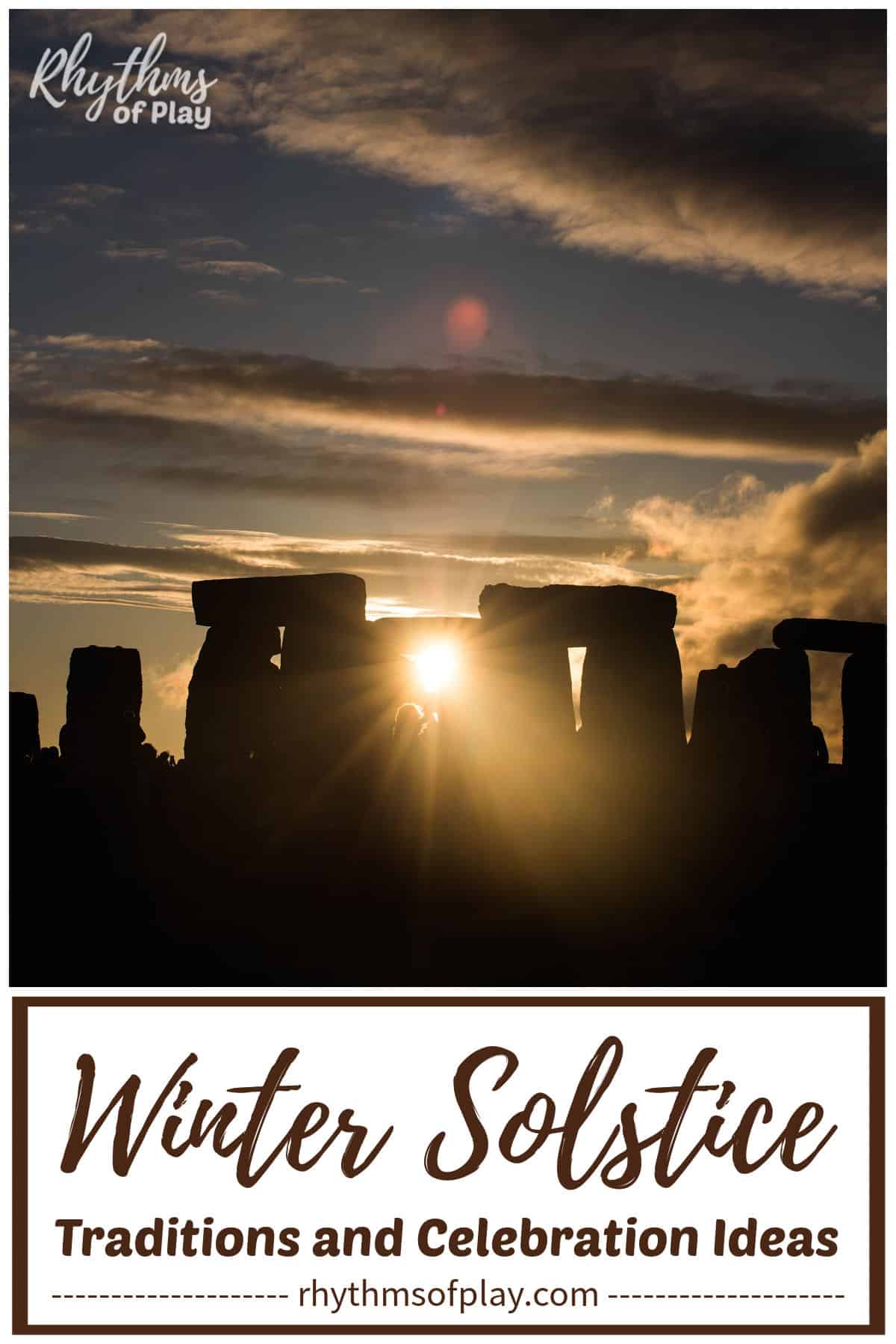
3. Make winter solstice lanterns.
A Winter Solstice Lantern symbolizes that our light can continue to shine even as the light and warmth of the sun are waning. Like the Yule Lantern, light emanates from our hearts, homes, and the fellowship of friends, family, and community.
Traditionally, candles and Yule Lanterns are lit to symbolize the light at Yuletide, the shortest day of the year and the year’s longest darkest night. Here’s a list of gorgeous winter solstice lantern crafts you can make to light your way through the dark days of winter:
- Glowing Leaf Lanterns and Luminary Crafts | Rhythms of Play
- Heart Leaf Lanterns | Rhythms of Play
- DIY Winter Solstice Lanterns | eHow
- Ice Lanterns | Kiwi Crate
- Hand-Painted Yule Candle Holders | Make solstice candle holders. A hand-painted sun would be fun!
- Fill paper bag lanterns
with sand
and beeswax tealights
or flameless tealight candles.
Related: Lantern Walk Tradition
4. Host or attend an advent spiral walk.
A winter solstice, or advent spiral walk, provides a lovely way to honor the light. An advent spiral walk is common at winter solstice festivals worldwide. Host or attend an advent spiral walk this winter to participate in this sacred meditative ritual.
As we walk the spiral, we honor the light of the candles as a reflection of the sun’s light and the light that burns brightly within us, even during the year’s darkest days. And carry the knowledge that the light within and surrounding us are one and the same. We are that light. And like Christmas and other winter holidays, Yule (the winter solstice) is a celebration of light. Have a Happy Solstice and Merry Yuletide!
5. Countdown to the solstice.
My daughter and I enjoy advent spiral walks so much that we created another way to spiral inwards and celebrate the rebirth of the light. Countdown to Yule, the winter solstice, or Christmas Day with a homemade stone advent spiral. A simple way to honor this sacred tradition in your home or classroom.
6. Craft and Gift orange pomanders for Yule.
In many earth-based solstice traditions, the orange symbolizes the sun. So, making sun wheels with citrus fruits and crafting orange pomanders is a sweet and fragrant way to celebrate the return of the sun on the solstice.
An orange pomander is a traditional solstice gift. These sweet gifts from nature are seen as a symbol of the sun and the returning light. They also symbolize nature, love, prosperity, and abundance and are believed to represent “A sweet and happy life.”
Decorate oranges with cloves to make orange pomanders to celebrate the solstice, and give them as gifts. Or, use them to decorate and freshen the home for the holidays. Because several orange varieties ripen in December, oranges symbolize the sun’s return in many winter solstice traditions.
Have you ever noticed that oranges look like bright round suns on a cold and dark winter day? Could you imagine how an orange would appear to you in the dead of winter if you were a hunter-gatherer living off the land as our early ancestors did? What a bright gift of juicy sustenance and blessing it must have been! Learn how to make an orange pomander for the solstice with these DIY tutorials:
- How to Make Orange Pomanders | Homemade Gifts Made Easy
- Make an Orange Pomander Centerpiece that Lasts! | Eclectically Vintage
7. Soak in a traditional Japanese Yuzu bath on the Winter Solstice.
In Japan, many people mark the changing seasons with a traditional Yuzu bath. A Yuzu bath is a hot bath filled with the citrusy yuzu fruit. Yuzu is a citrus plant that grows in East Asia that ripens into a bright yellow hue. This citrus fruit produces a fresh, citrusy aroma that helps relieve sore muscles, relax the senses, and ease the body and mind.
Bathing with this Nomilin and vitamin C-rich fruit is also said to promote better circulation and help prevent colds and viruses. (If you can not find a Yuzu fruit, put a few drops of lemon, grapefruit, orange, or citrus essential oil with or without Epsom salts in the bath to soak in.) These citrus dips are said to ward off evil and bring good fortune for the year ahead. Learn more about this ancient Japanese winter solstice tradition–>HERE.
Related: How to Make Scented Bath Salts (Bath salts make a great gift for Winter Solstice or Christmas)
8. Set up a Yule altar.
Choose a space in the home to set up a yule or winter solstice altar for the new season and the coming year. A shelf, small table, dresser top, or nature table make excellent choices. Use beeswax candles, holly, evergreen boughs, citrus fruits, and seasonal crafts (such as the winter solstice crafts recommended in this post) to decorate your Yule altar.
Reindeer candle holders that symbolize the Deer Mother and the blessing of the life-giving light she continues to bring us during the dark days of winter are equally lovely.
Any other items that are meaningful to you and symbolize the light, the birth of the sun, seasonal cycles, or represent the longest night of the year are also good choices. Learn more about building a Yule Altar HERE.
9. Make reindeer cookies for the Deer Mother.
Bake and decorate reindeer cookies in honor of the Deer Mother on the night of the solstice. In many lands, families with children offered cookies to nourish the Deer Mother on her journey into the New Year with her life-giving light. Sound familiar? If you would like to make reindeer cookies to honor this solstice ritual follow these simple instructions:
- First, use a reindeer cookie cutter and our cake mix sugar cookie recipe to make reindeer cookies. (Or, use one of your family’s favorite cookie recipes to make reindeer cookies.)
- Next, set them out on the night of the winter solstice as a gift for the Deer Mother, and she will bestow you with the blessings of fertility, health, wealth, good fortune, and light.
10. Enjoy a Yule log.
A traditional Yule Log is a unique ceremonial log lit on the night of the winter solstice or Yule, hence the name. However, several other Yulelog alternatives are available today. Burning a yule log on the winter solstice is a ritual to help re-ignite the sun. Traditionally, and in some places still today, a Yule log fire is kept burning all night as a symbol of light on the year’s darkest night.
The Yule Log was originally an entire tree, that was carefully chosen and brought into the house with great ceremony.
source
In ancient times, the yule log burning would occur in a fireplace or at a large bonfire to celebrate Yuletide or Christmastide and the return of the light. Traditionally, people kept a piece of the yule log to help ignite the next winter’s yule log.
Learn how to burn a traditional Yule log to cleanse sins and decorate solstice tables this midwinter HERE. (You may also enjoy How to Build a Campfire and keep everyone safe.) Or, try either of these alternative Yule log ideas:
Yule Log cake recipes:
Yule Log cakes are commonly made by those who do not have a hearth or fireplace to burn one. (source) Here are a few yule log cake recipes:
- Bûche de Noël (Yule Log Cake) | Delish
- Gluten-Free Yule Log | Christina’s Cucina
- Nutmeg Yule Log Cookies | Woman’s Day
Modern-day Yule log alternative:
Another modern Yule Log option for those without a fireplace is a Yule Log Video! I realize these Yule Log options are not ideal, but they are much nicer than you think! Fire up a merry Yule Log HERE.
11. Read books about the winter solstice.
Read winter solstice books with your kids to learn more about yule and the cyclical nature of the seasons throughout The Wheel of the Year. We have a great list you can see HERE–>Winter Solstice Books.
12. Make sun and star crafts and ornaments.
The sun and stars are common symbols of light. Because they are symbols that represent the return of the light of the sun. Sun and star crafts are the perfect crafts and decorations for decorating Christmas and Winter Yule Trees. Use the fun star and sun craft ideas below for winter solstice crafts like these dried orange slice ornaments. Or any other fun sun or star ornaments on the solstice. You may also enjoy this list of DIY Christmas ornaments.
Sun and star ornaments for the Yule or Christmas tree:
- An angel holding a star.
- Wishing Star Ornaments (These are great for making wishes for the New Year.)
- Christmas Tree Twig Ornaments with a wooden star on top (This post also links to more twig ornaments, including DIY twig star ornaments.)
- Walnut Shell Baby Jesus with a star.
- Make beaded snowflake ornaments with silver, gold
faceted glass, or clear Swarovski Crystal beads
that sparkle like the sun and stars.
- Invite children to use paint pens
to decorate wooden star ornaments or hang them on the tree as-is for a simple, natural look!
- Dehydrated Orange Sun Wheel Ornaments by Rhythms of Play. (Photo below)
- How to Sew a Mini Felt Sun by Bugs and Fishes.
More sun and star crafts for Yule:
Here are some simple sun crafts (that also make great homemade gift ideas) kids can make. Invite children to help you make any of these cute sun crafts and hand them out to friends, family, and neighbors as solstice gifts!
13. Spend the night by candlelight.
Many people choose not to use electricity on the solstice and enjoy the darkest night of the year by candlelight. If you decide to try this, we recommend burning beeswax candles in votives, candle holders, or lanterns
lit on the evening of the solstice.
What do beeswax candles symbolize?
A beeswax candle is a symbol of light. When a beeswax candle is lit, it symbolizes that light and love are eternally present. Best of all, the smoke of a beeswax candle is much more pleasant and healthier for our lungs and bodies than paraffin wax. Because they also emit negative ions researched to improve health!
14. Host or Attend a candlelight winter solstice feast.
In modern times, Thanksgiving and Christmas are seen as a time of overindulgence in food and drink; however, this is another tradition borrowed from pagan equinox and solstice rituals and traditions. In ancient times, pagans would overindulge to celebrate “the return of the light” and the food it would bring even though their food supplies had become scarce.
Invite friends and family over for a candlelight feast! Eat, drink, and be merry! Visit your farmer’s market to find locally grown and raised seasonal foods to prepare. Make the traditional winter solstice drink known as wassail (see recipe below) to serve with your meal, or enjoy hot cocoa with marshmallows.
Candlelight Solstice Dinner Tip: If you plan to spend the night by candlelight, eat your solstice meal an hour or two before sundown, and ensure you have plenty of easy snacks ready and available to serve when bellies get hungry after dark! Washing dishes and preparing food is not easy when the lights are off!
15. Enjoy a cup of Wassail.
Make the traditional winter solstice drink known as Wassail (spiked or unspiked) to spread warmth through the body on the shortest day and the longest night of the year. Wassail is a beverage commonly made from a blend of apples and spices served with or without alcohol added to the recipe. Many spices used to make Wassail–cinnamon, orange, nutmeg, ginger, allspice, etc.–are believed to have magical solar and fire associations.
Wassail is a hot mulled cider traditionally made with apples and spiked with bourbon, brandy, wine, or ale with spices added to it–but you can also enjoy it without any alcohol included. It is a winter drink traditionally shared at Yule to invoke the sun and bring good cheer as we face the darkness and the long, cold winter ahead. Enjoy a glass of hot Wassail with your solstice feast as you sit by the Yule log fire and throughout the holiday season. Try the Wassail recipes below to make this traditional winter solstice brew.
Wassail Recipes for Yule:
- Winter Wassail Recipe (spiked or unspiked) | Raising Generation Nourished
- Here We Come A-Wassail-ing: a Yuletide Drink of Good Cheer | Witch Fire
16. Stay up all night to welcome the return of the light.
Stay up all night during the winter solstice to welcome back the light. In ancient times, people stayed awake to ensure the sun was coming back. Today, many stay awake on the darkest night of the year to celebrate, hold reverence, and watch the light return.
After the solstice, each day will grow a little longer, and each night will get a little shorter until they are about equal on the spring equinox. Once the equinox has passed, the days get longer, and the nights continue to get shorter until the summer solstice.
17. Reflect, release, and transform darkness into light.
As mentioned above, the winter solstice is considered the seasonal “dark night” of the soul. Thus, spiritually, it is a time to circle within to honor the light and darkness within each of us.
The death of winter brings new life so that a new dawn can be born within the darkest night. Celebrate this new beginning by releasing attachments and negativity that no longer serve you and striving with intention into the light to manifest your dreams.
First, write down everything you would like to release and let go onto a single sheet of paper. (Or write them down on several tiny scraps of paper.) Continue to write down every hurt, every perceived injustice, and judgment against self or others, no matter how big or small they may seem. Let it all go.
Get it all out. Keep writing until you begin to feel a bit “lighter.” Take a moment to honor the messages that the darkness shares with you, and allow this awareness to shed light upon the darkest parts of yourself.
Find forgiveness for others and, even more importantly, yourself. Look for the lessons, and take a moment to be grateful for everything you have learned through the challenging moments of the year and in your life. Remember, without darkness, there would be no light.
Once you feel finished, throw the paper in the yule log fire (or bonfire) and allow the flames to transform the darkness into light. If you have a solstice gathering, invite guests to join you in this activity.
18. Set intentions for the New Year.
After you release and let go of the darkness no longer serving you, it is time to write down your intentions. An intention is a thing, idea, habit, etc., that you want to manifest or make a part of your life in the New Year.
How do you manifest on Winter Solstice? Create specific goals and design an action plan to accomplish them for the best results. After you have a few of these goals and intentions on paper, learn how to turn your intentions (or goals) into positive affirmations–and why!
19. Practice yoga and meditate on the solstice.
The winter solstice is the shortest day and the longest night of the year. Meditate and practice yoga to bring light on the darkest day of the year! We are a reflection of the universe around us, and the winter solstice represents the seasonal “dark night of the soul.” Therefore, what takes place outside of us must also occur within us.
In other words, Yule is a time to celebrate the light and darkness within and surrounding us. Taking the time to practice yoga or meditate on the light within and acknowledging the shadow self can help bring the light of awareness into the darkness for the greater good.
20. Add natural festive winter decor to your home or workplace.
In ancient times, people brought evergreen, holly
, mistletoe, or a fir tree
inside the house to decorate the solstice. This earth-based winter solstice tradition is another ritual incorporated into many of today’s Christmas traditions.
Bring plants indoors from the outdoors to decorate your home for Yuletide. Cut fresh holly to make a homemade holly berry wreath, get a permit to cut down a tree for Yule, visit a Christmas tree farm to cut down a tree, or get a cut or fresh tree from a local lot.
Another fun way to decorate the home for the winter is to make a winter nature table. A nature table makes a great place to set up a yule altar. (Scroll up to #7 to learn more about building a solstice altar.)
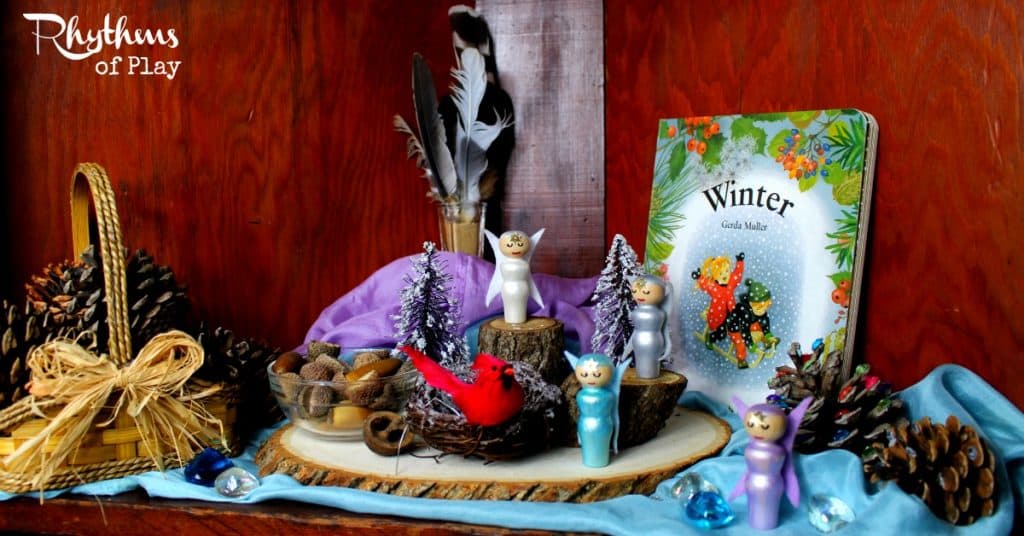
21. Incorporate the magical colors of Yule into your solstice celebrations.
Many traditional seasonal Christmas colors have their roots in age-old customs and traditions. Learn more about the magical colors of the winter, traditional color customs, and how to incorporate them into your yule celebrations on Learn Religions.
22. Enjoy winter arts, crafts, and activities.
Creating winter arts, crafts, and activities is a great way to welcome the season. Some of our favorite winter crafts and winter art ideas are below!
- Colorful Winter Tree Silhouette Art
- Best Winter Art Projects and Painting Ideas
- Rhinestone Pinecones
- Acorn Marble Ornaments
- Beaded Snowflakes
- Snowpeople Ornaments
- Four Seasons Hand Print Tree – This four-seasons hand and fingerprint tree (shown in the photograph below) is a great activity to do with your child to introduce the idea of seasonal changes. Feel free to do all seasons or just a winter tree.
- for more ideas, check out our Winter Bucket List of fun winter activities for kids!
23. Practice gratitude.
Gratitude brings abundance. Just because Thanksgiving has passed does not mean the time to give thanks has. Use gratitude prompts and the “I am Grateful” Printable to start gratitude journaling.
Holding gratitude in our hearts during the winter months can ultimately help us live the life of our dreams. “When we are thankful for what we have, we are given more of what we are grateful for and can find greater happiness in life.” Try gratitude activities with your kids and family to stay “in gratitude” throughout the long nights of winter.
24. Choose a word for the New Year.
Samhain marks the beginning of the New Year in the Celtic Tradition, and January 1st (the start of the year on the Gregorian Calendar) is right around the corner. So, another fun idea for the winter solstice is to choose a word for the new year. Feel free to look at our inspirational word ideas and decide on a motivational “word” for 2023. After I choose my word, I like to spend the winter holiday season creating intentions and goals for the new year to help manifest my dreams. Feel free to join me in this activity!
25. Set goals and make a plan to accomplish them.
Because they divide the year into four equal 90-day (ish) quarters, the equinoxes and solstices (or the cross-quarter days) serve as a great reminder that it’s time to do a goal review and set new goals. Have a look at either of the resources below to get started:
- How to Set SMART Goals
- Create a life you LOVE with our Dream Life Tool Kit
26. Make a plan to try something new this winter.
The winter solstice is a great time of year to let go of the old and begin fresh. Follow the steps below to get started:
- Make a list of things you’d like to try or do.
- Limit your list to winter activities, such as trying a new art project, sewing a softie, or giving snowshoeing
a go!
- Make a plan to start one new thing this winter.
Related: How to Change Your Life with the Power of Habit
27. Establish a daily rhythm or routine.
Establish a daily routine to help keep your household in order into the new year. Both children and adults thrive when regular household rhythms are a part of their lives.
Related: 10 Reasons to Make Rhythm a Habit in the Home
28. Get outside and connect.
Get outside and connect with what matters on the solstice. You can start by searching for signs of winter–an educational nature scavenger hunt for kids and adults.
Or, if you have toddlers and preschoolers at home, this winter scavenger hunt has pictures to make it easier for young children to participate.
You might also enjoy this list of fun outdoor learning and nature activities for kids–it contains even more outside activities for kids (and adults)!
2023 Winter Solstice Activities and Celebration Ideas: Fun Ways to Celebrate the Changing Seasons
Remember, this is NOT a must-do list, or a should-do list, but a fun-do list. Try any of the winter solstice activity ideas on the list above, or take a moment to teach children a bit about the solstice and the changing seasons. But only if you’d like to, not because we said so. And please feel free to check out our Winter Bucket List for more fun seasonal arts and crafts.
You may also enjoy Meaningful Christmas Traditions for a Magical Holiday. In it, we continue to share the influence these ancient winter solstice rituals have on how people across the globe celebrate Christmas today. Happy Yule!
Learn more about Rhythms of Play HERE!
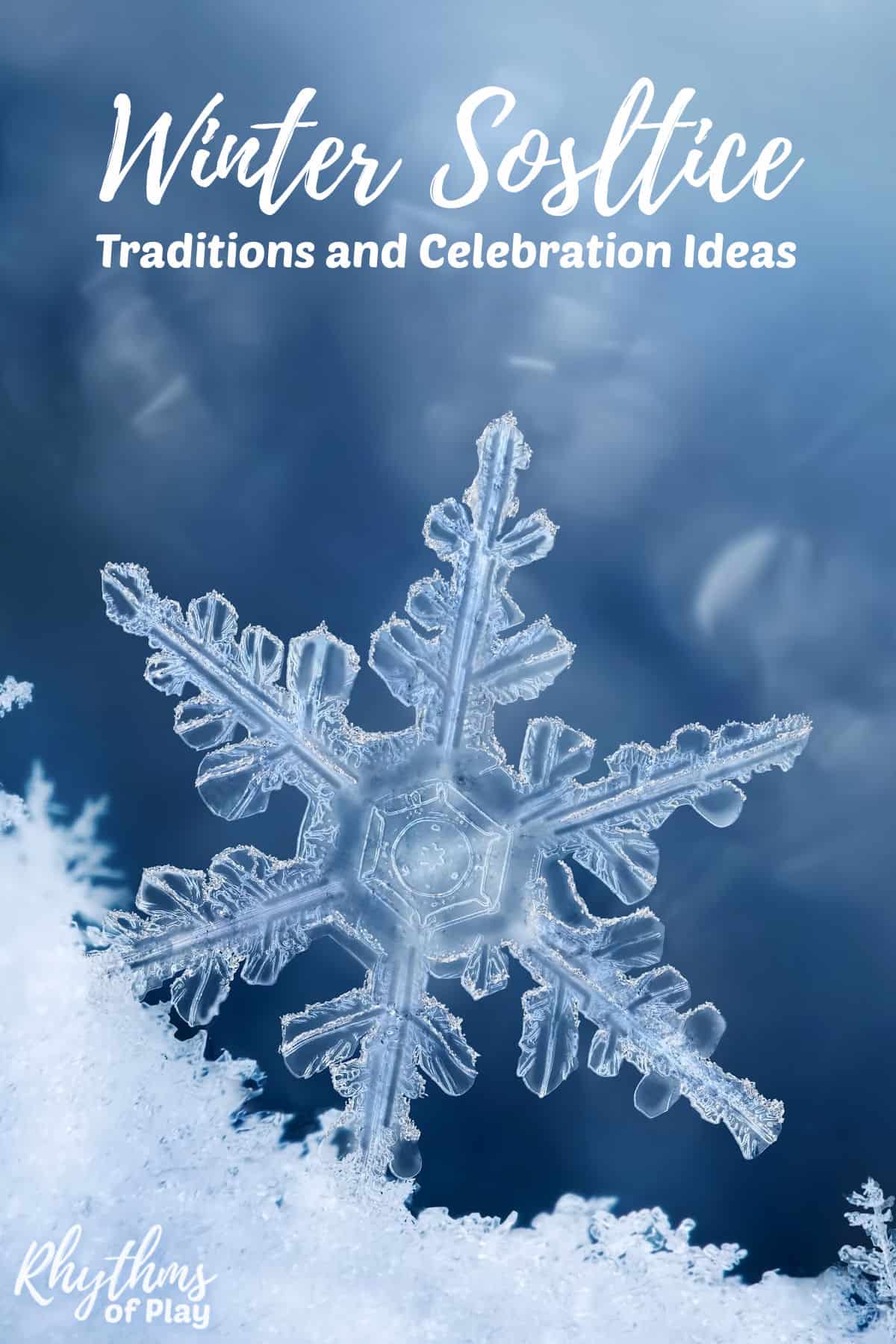
If you liked these Winter Solstice 2023 Ideas, You might also enjoy learning about the other Quarter Day and Cross Quarter Day Festivals in The Wheel of the Year.
If you’re curious about the Wheel of the Year, the list below shares each of the solar quarter-day and lunar cross-quarter-day or midpoint festivals on the Celtic Calendar. It begins with Samhain because it is considered the New Year of this ancient Celtic Calendar.
- Samhain -Hallows, Hallows Eve, or Halloween
- Yule – Winter Solstice
- Imbolc – Candlemas
- Ostara – Spring Vernal Equinox
- Beltaine – May Eve or May Day
- Litha – Summer Solstice
- Lughnasadh – Lammas
- Mabon – Fall Autumnal Equinox
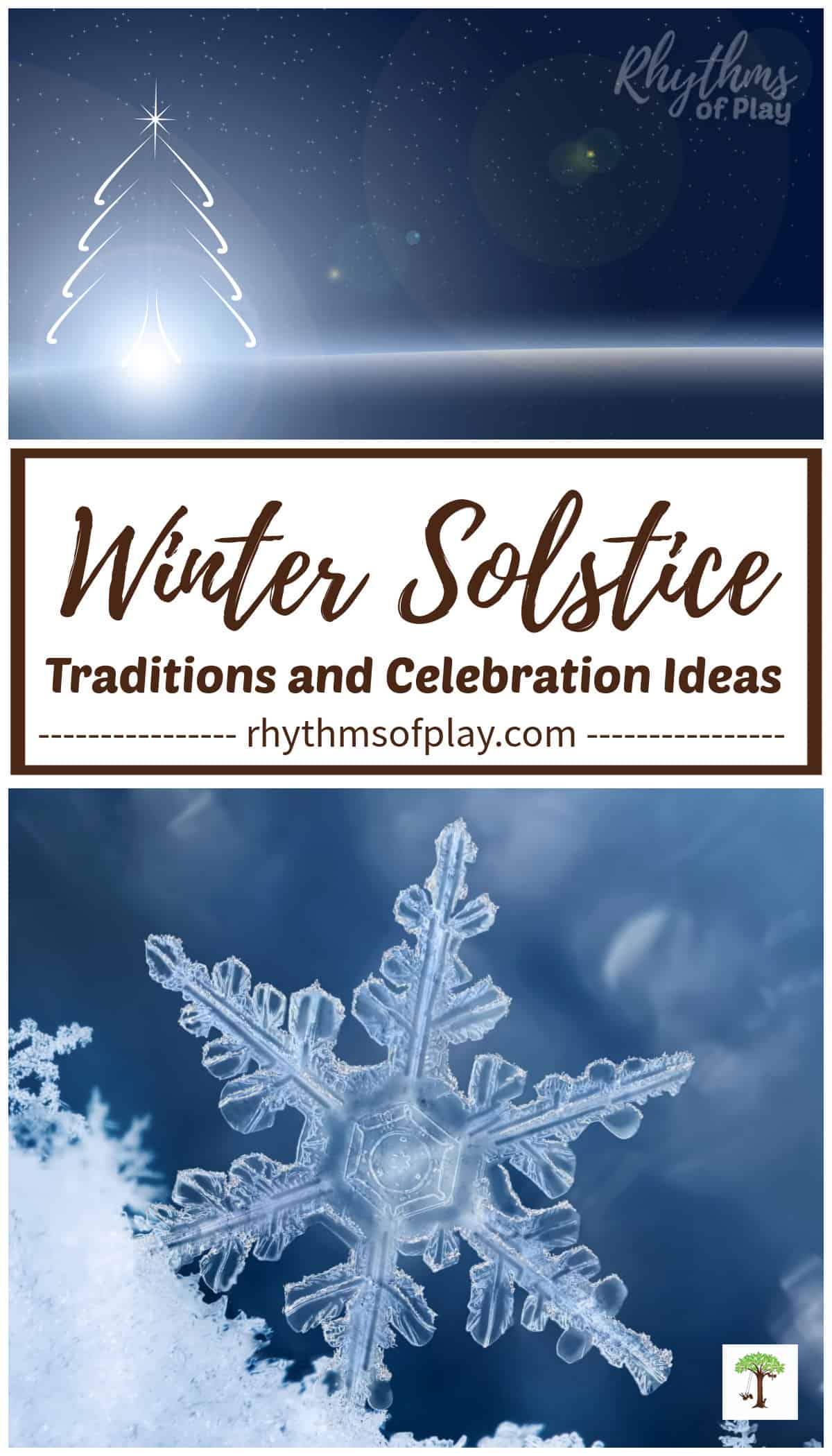
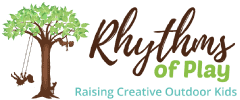
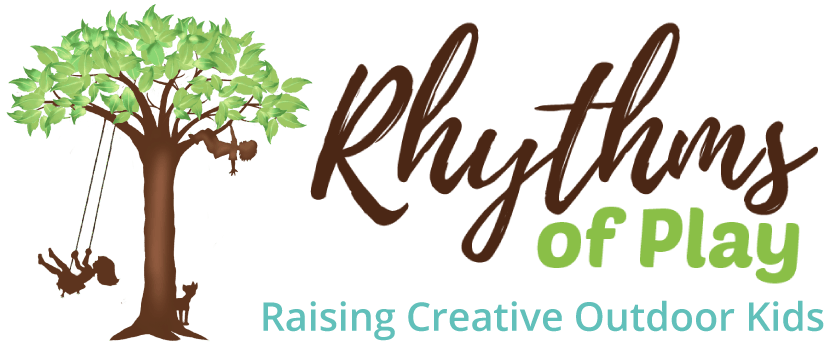
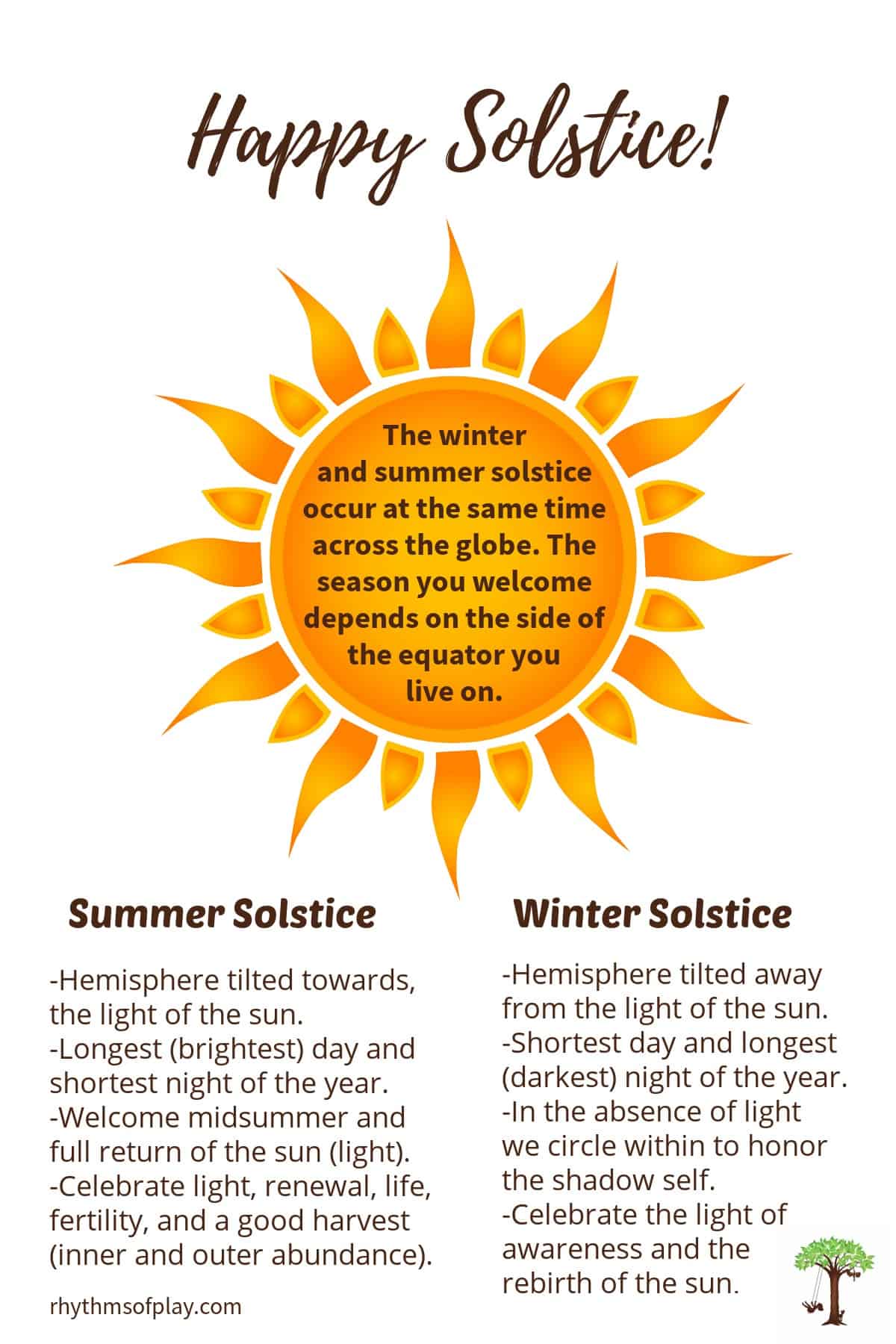
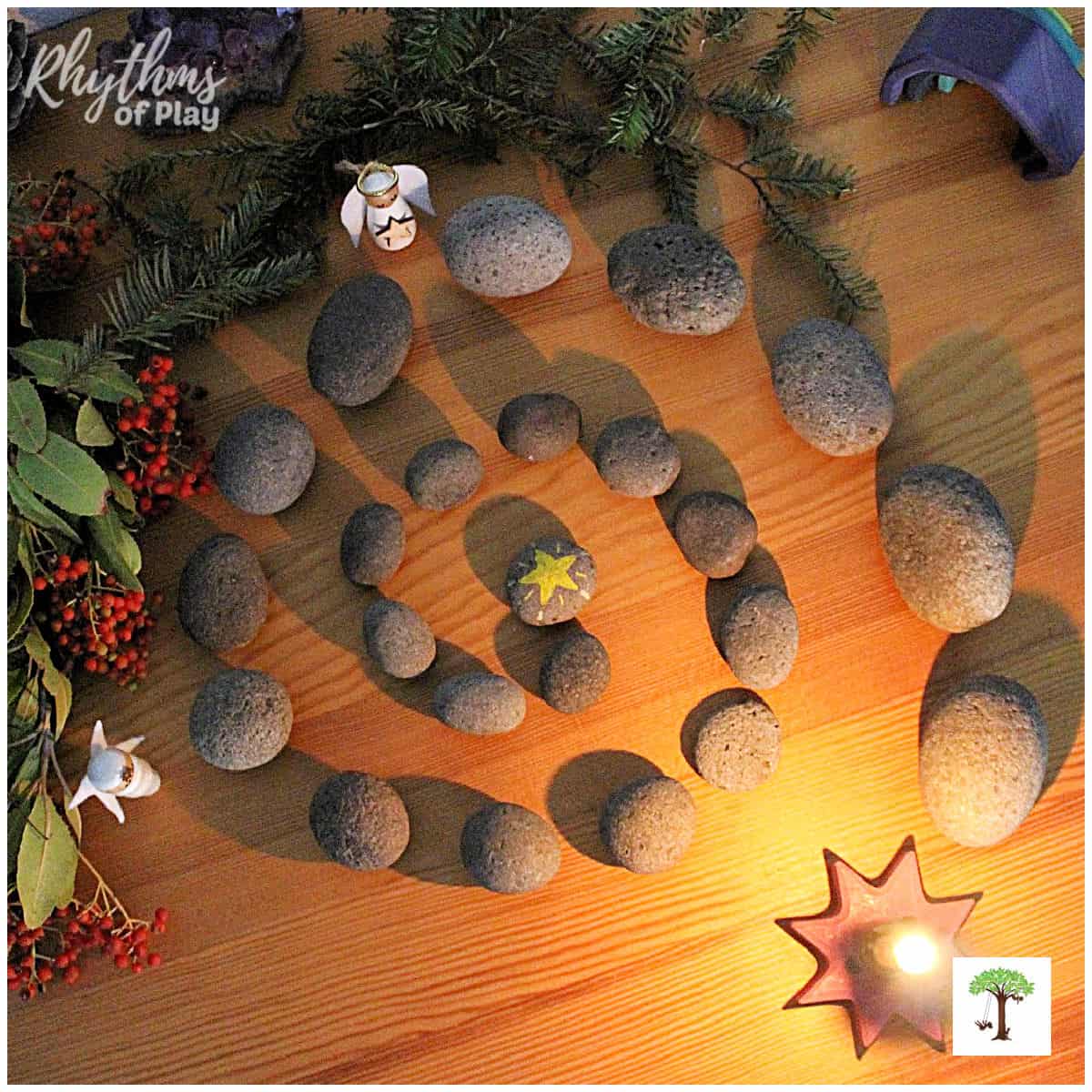
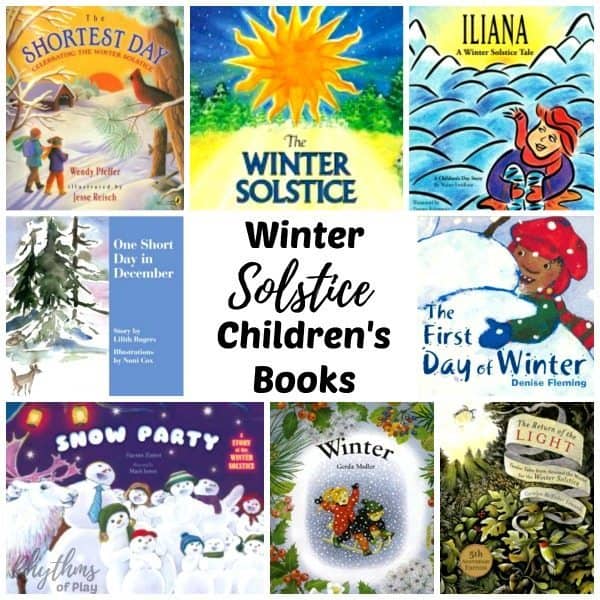
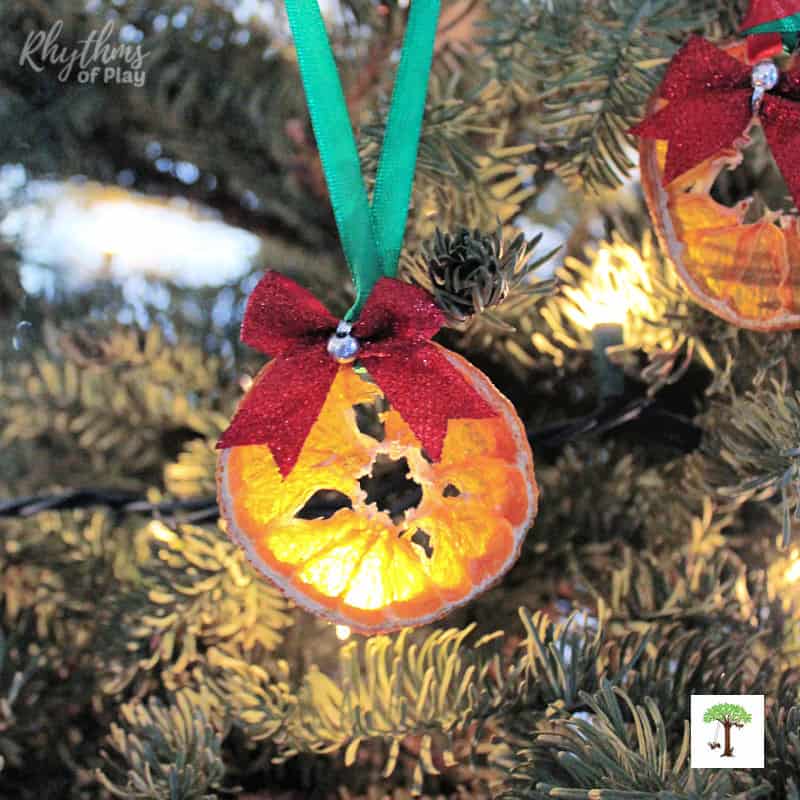
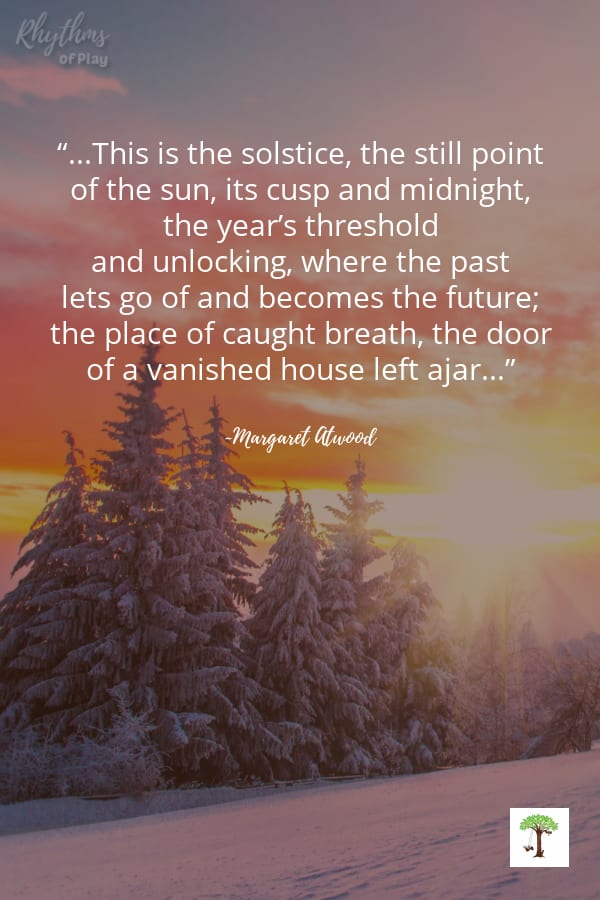


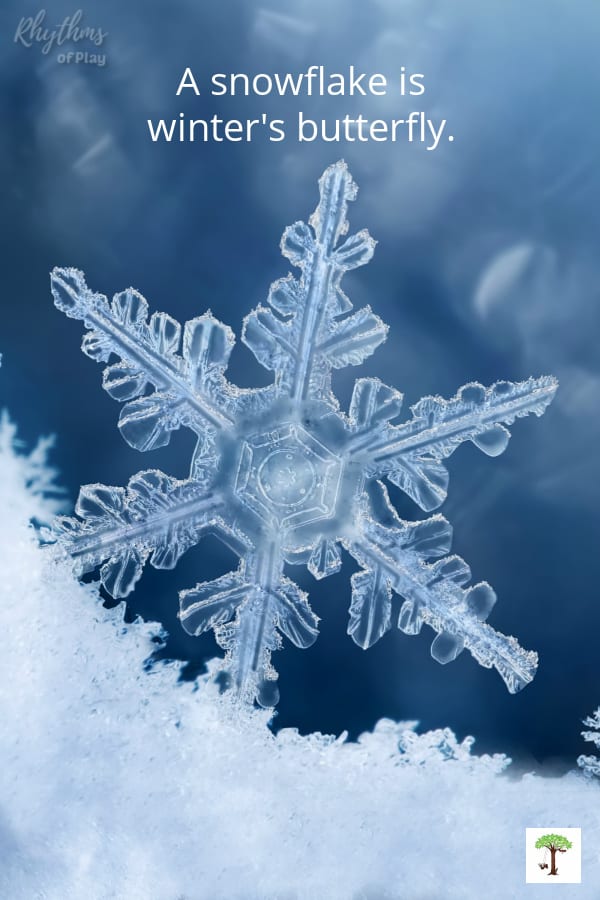
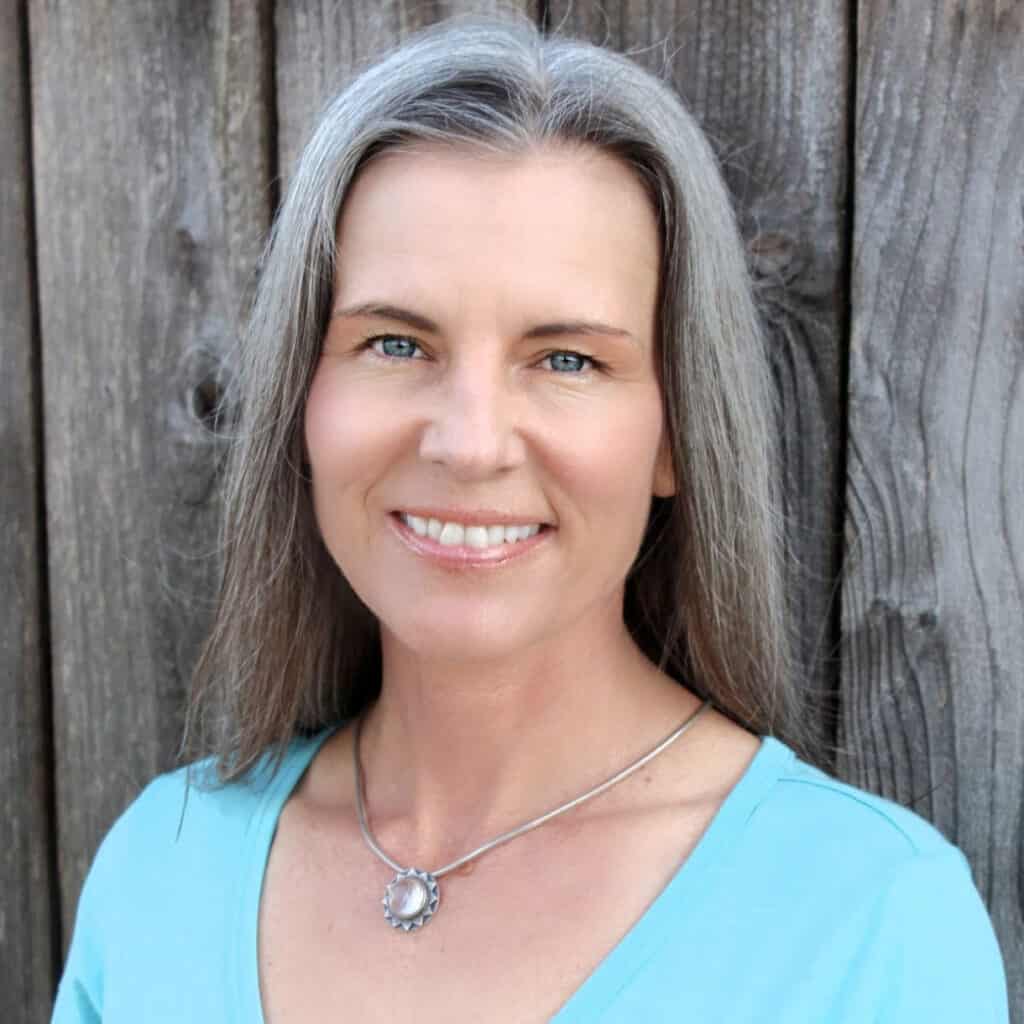
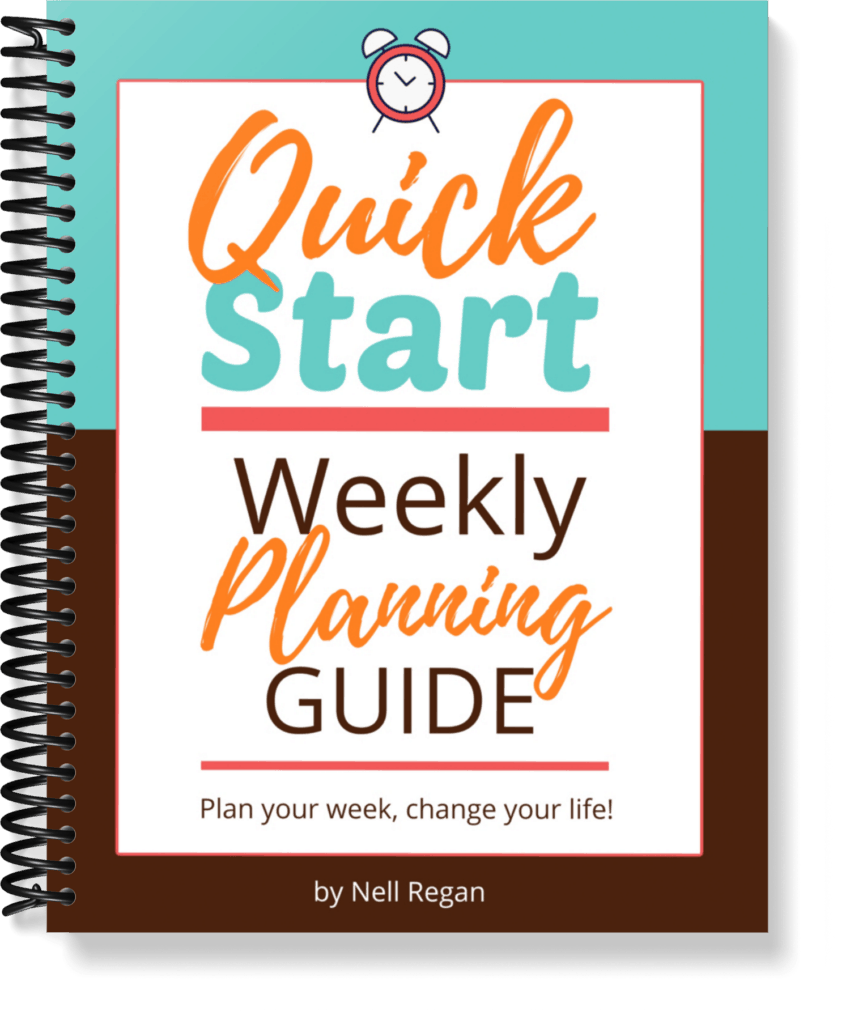
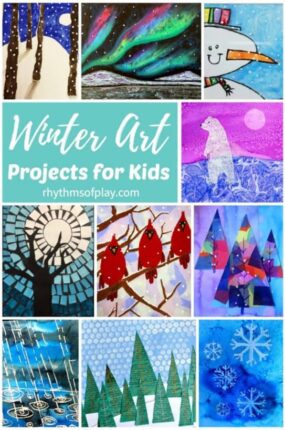
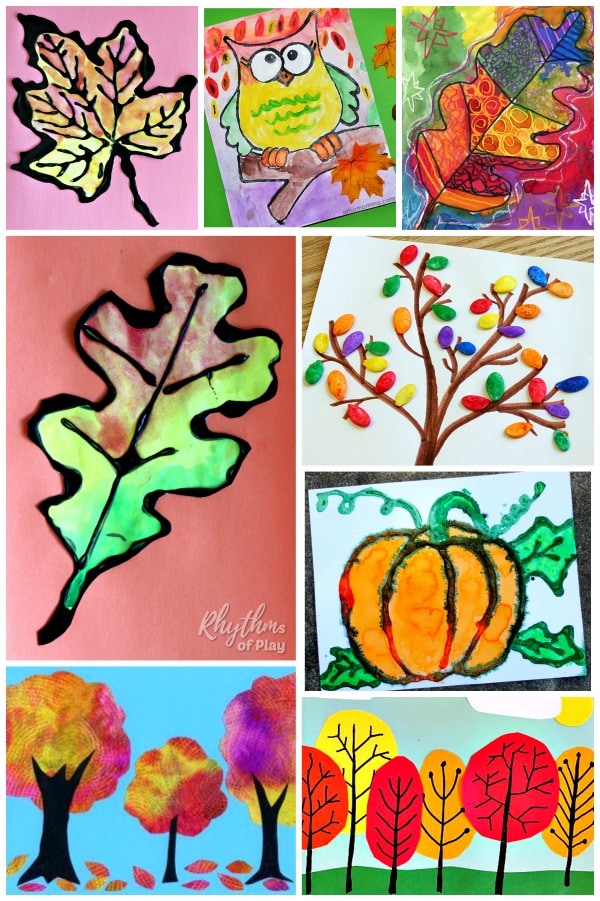



Love this! Sharing!
Thank you! So glad you like it 🙂
Are you a pagan blogger? I have been looking so hard to find others!! Love these, such great suggestions! I was writing a pretty similar post earlier today lol. All about the Winter Solstice, you have some great ideas on here.
I’m so glad you found this post useful! My family is filled with nature-loving outdoor types that choose to celebrate the solstice. It’s also a great way to teach my daughter about the cyclical interrelationship of all things. Blessings to you and your family!
I love this! As a a mum to an almost three year old, I was wondering how to capture the true spirit & wonder of the season that I love so much without the commercialized aspects. Before now, I didn’t have to consider it since my daughter was too little to notice that we only hung snowflakes in the window and didn’t have a Christmas tree. I love the idea of the outdoor Yule tree for the animals. I didn’t want her to feel like she was missing out as the holidays approached. Thank you for sharing!
Yuletide greetings Jenn,
I am so glad that you like this post about the winter solstice and fun ways to celebrate the magic of this glorious season. Honoring the seasonal changes that occur throughout the year is one of my family’s favorite ways to keep the magic alive in our home. We too have tried to stay away from the commercialized aspects of the season, and we never feel like we are missing out on a single thing! Happy solstice to you and yours. I hope you enjoy decorating an outdoor yule tree for your animal friends–we always do!
Nice post. I like the ideas for celebrating as well as the science. You might consider rewording the opening paragraph which states that the solstice occurs when we are “furthest from the sun’s light”. The winter solstice occurs about two weeks from when we are at perihelion – out closest distant to the sun.
Thank you, Hugh! You are absolutely correct and I have edited my error. Thank you so much for pointing it out so that I could fix it. Happy winter solstice!!
Love these ideas.
Thanks, Ann! I always appreciate hearing that my ideas are useful. Have a Happy Winter Solstice!
So beautiful
Thanks Caron! So glad you enjoyed our Winter Solstice article 🙂
Loved your ideas. Practical, lighthearted and doable. We are having a party tonight and I will use your tree painting idea and try to get all the people to participate. Thank you for for this sunny page.
Thank you, Rox! So glad you liked this page and found it full of light and usefulness. Happy Solstice!
Looking forward to trying some of these amazing ways to celebrate the winter solstice. Thank you for all the interesting information about the winter solstice.
You’re very welcome, Alexander! I hope you enjoy celebrating the winter solstice!
At#6, the second “day” should be changed to night:
After the solstice, each day will grow a little longer, and each day will get a little shorter until they are about equal on the spring equinox
Yes, you are correct! Thank you for catching that typo… it has been corrected. 🙂
Really great article! Love all your ideas.
Thank you, Valerie-Anne! I appreciate your vote of approval. May your winter solstice celebration be filled with light. Happy Yule!
Thank you Nell for such a great site. I like to share it with as many people I can. It explains many traditions that are done today, but many don’t know why or where they came from.
Thank you, Riverfurm. I have been curious all my life about the reasons we do the things we do and why. Putting this article about winter solstice traditions together was eye-opening for me; it helped me shed light into the darkness and understand things in a new way. I’m glad that it can do the same for others. Blessings to you!
Just did this in school, really cool keep it up
Hi Hunter! I’m so glad that you did something, or learned something about the winter solstice in school. Happy New Year!
ty so much. very helpful!
You’re very welcome, Karen. So glad you found this article about winter solstice traditions and celebration ideas helpful. 🙂
Thanks so much for all these lovely ideas & info! My beloved husband and I are visiting with the daughter who I gave up for adoption 60 years ago (we were reunited more than 30 years ago), and it saddens me to see how her life is shadowed by insecurity & self-doubt, despite having a loving husband, a good life, 3 handsome, healthy grown sons and oodles of creative energy. I’m going to craft a Solstice ritual for us, and maybe she can “burn away” some of that negativity and be ready for the Christmas season and the New Year with new life. I gave her life once, and gave her away so that she could be raised by people who needed her, but I have regrets that I must release, myself. Thanks for the creative guidance. Blessed be!
Hello Susan, I am so glad that you found the information about the Winter Solstice, and the celebration ideas suggested helpful. I am so glad that you will be sharing some of these Winter Solstice rituals with your daughter. Wishing you love, light, and a blessed holiday!